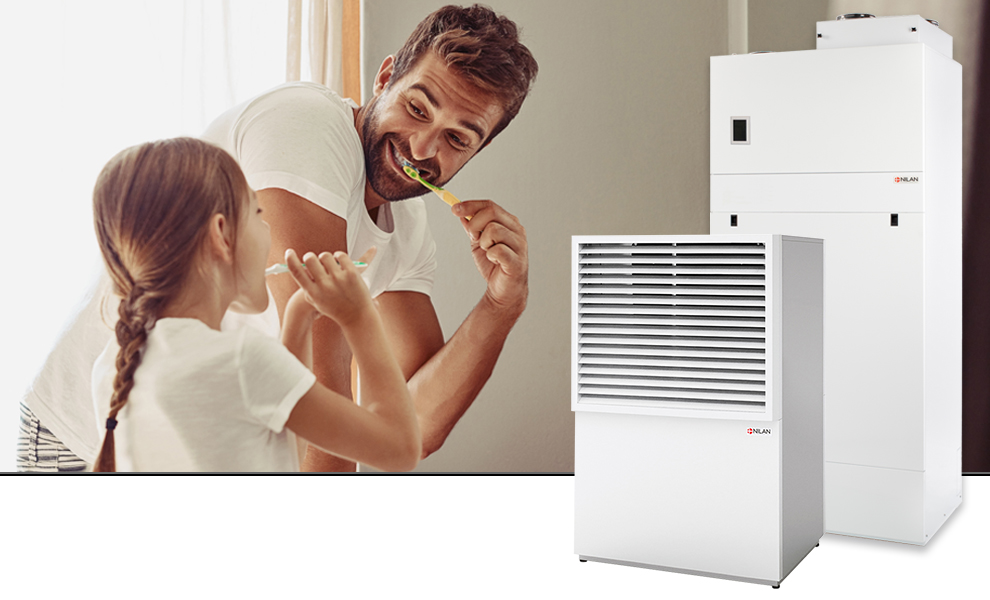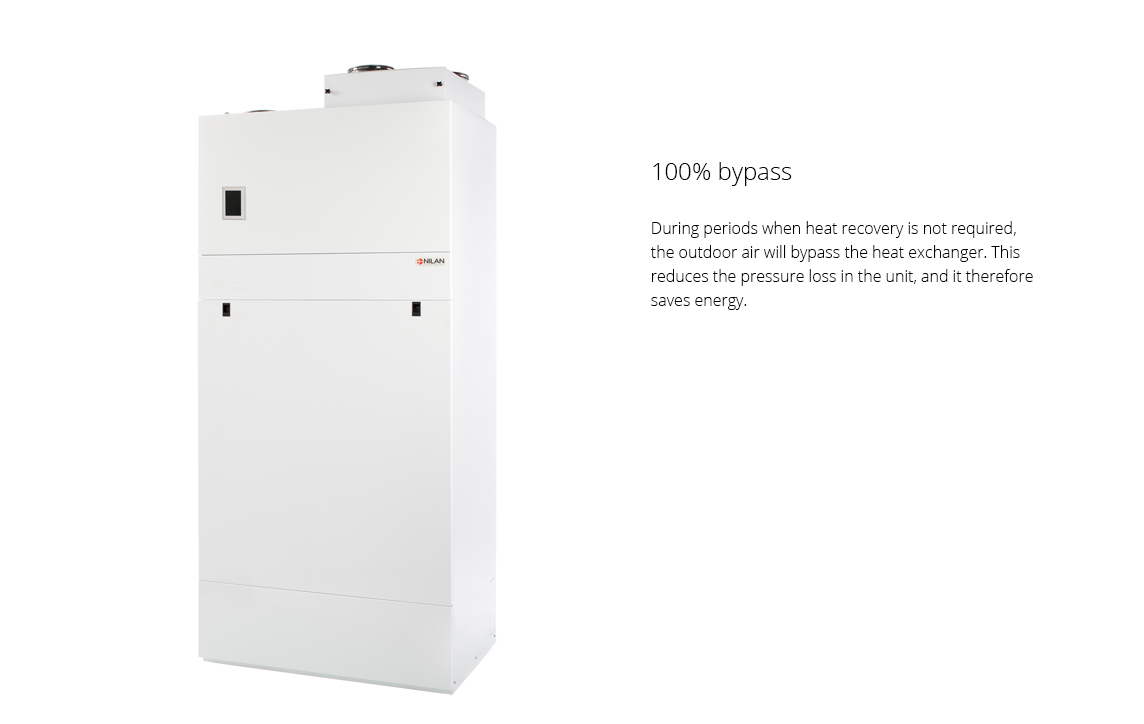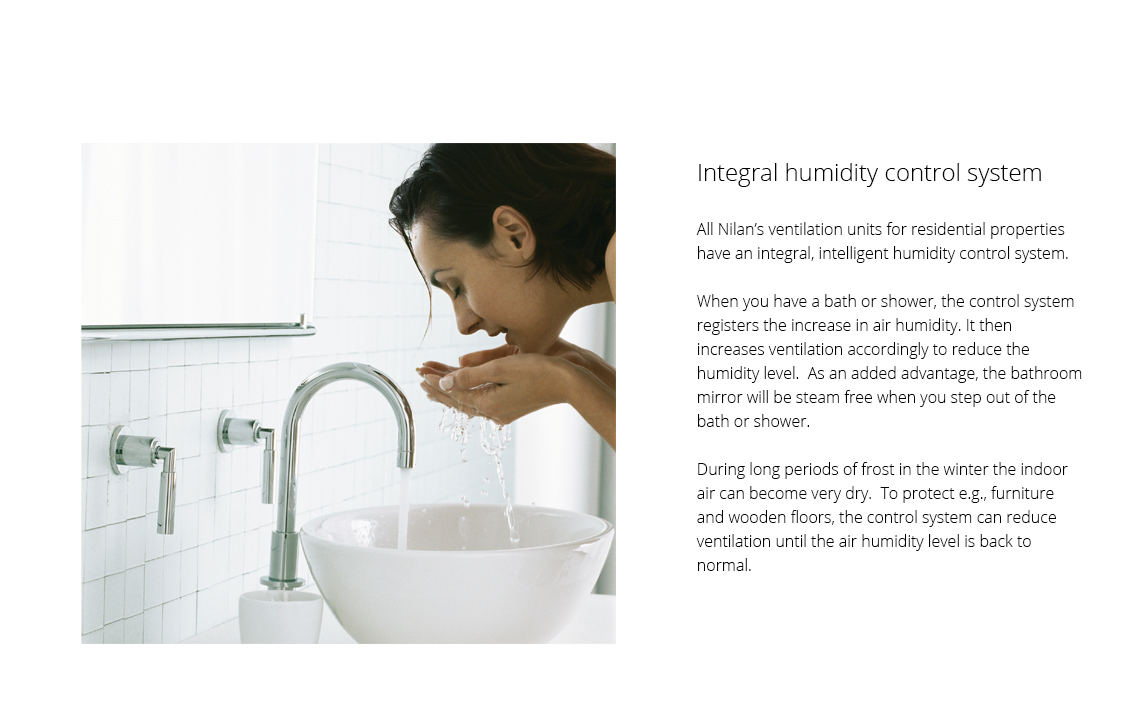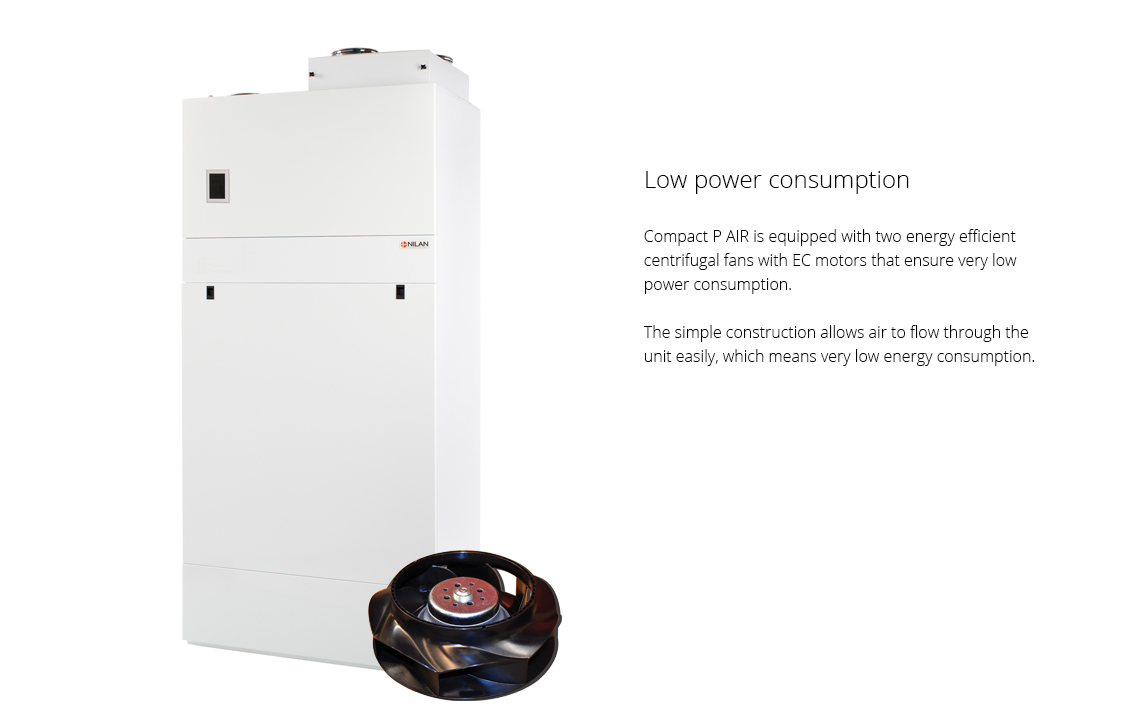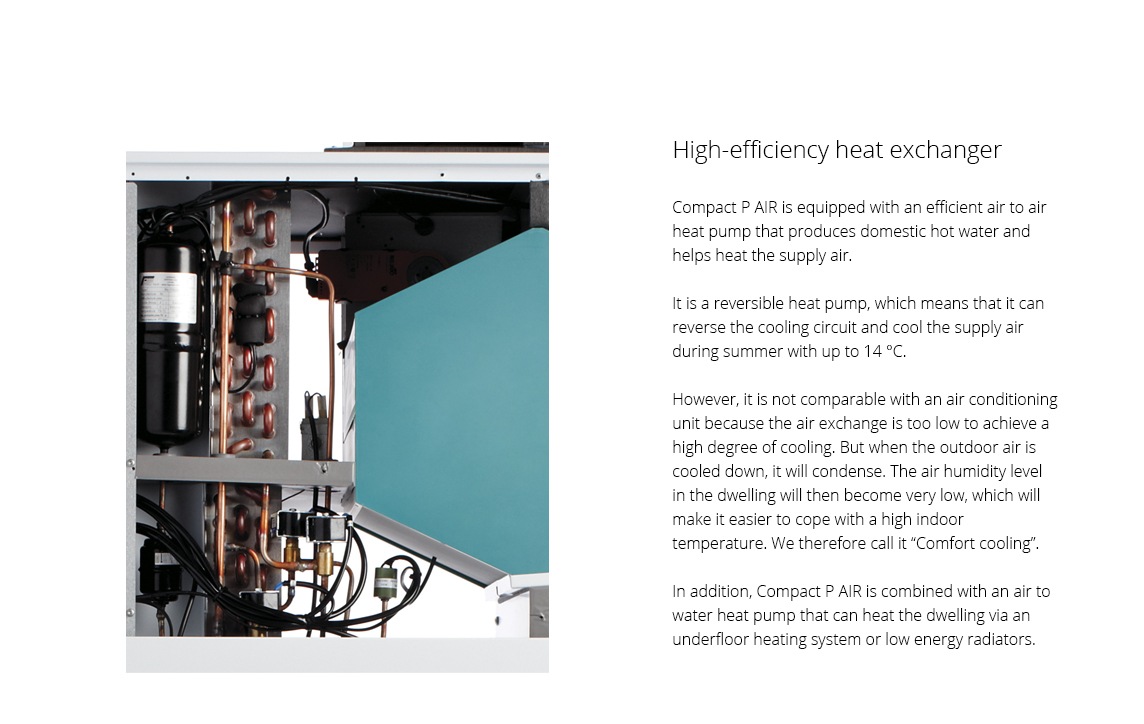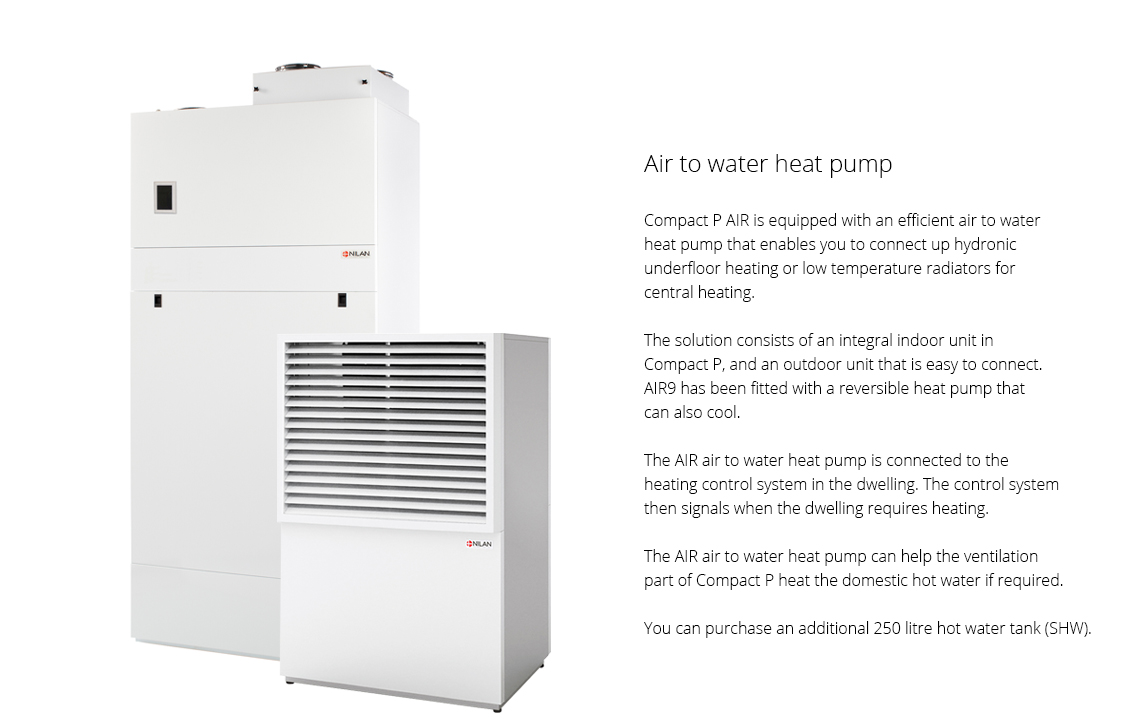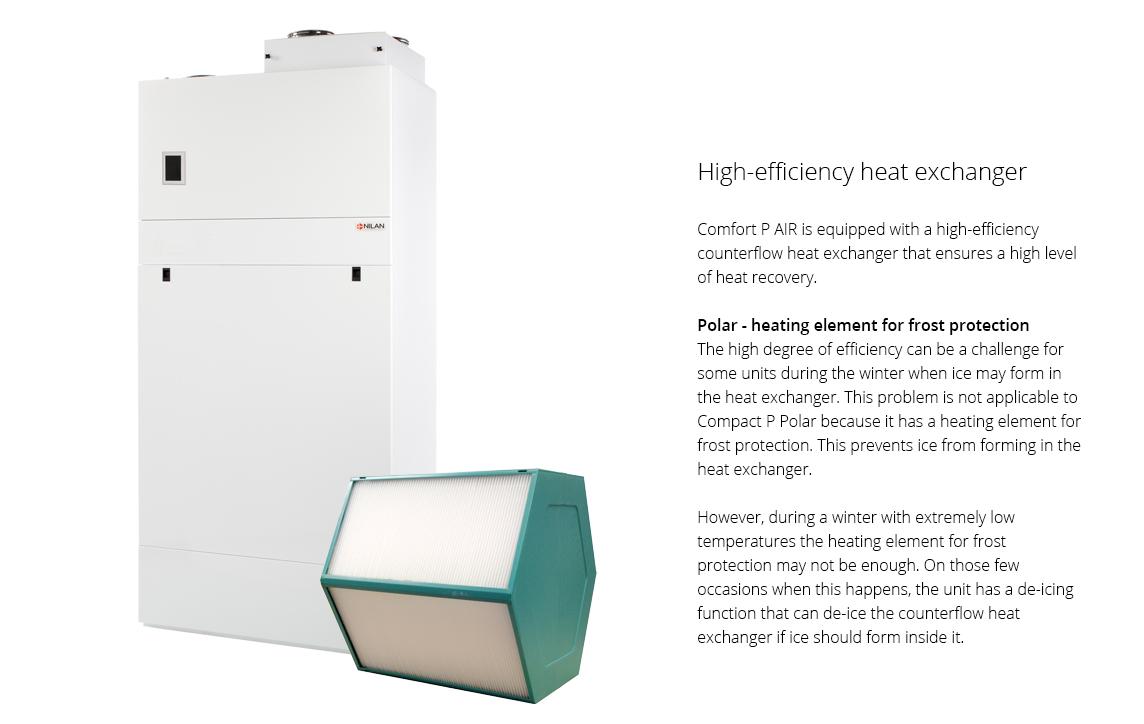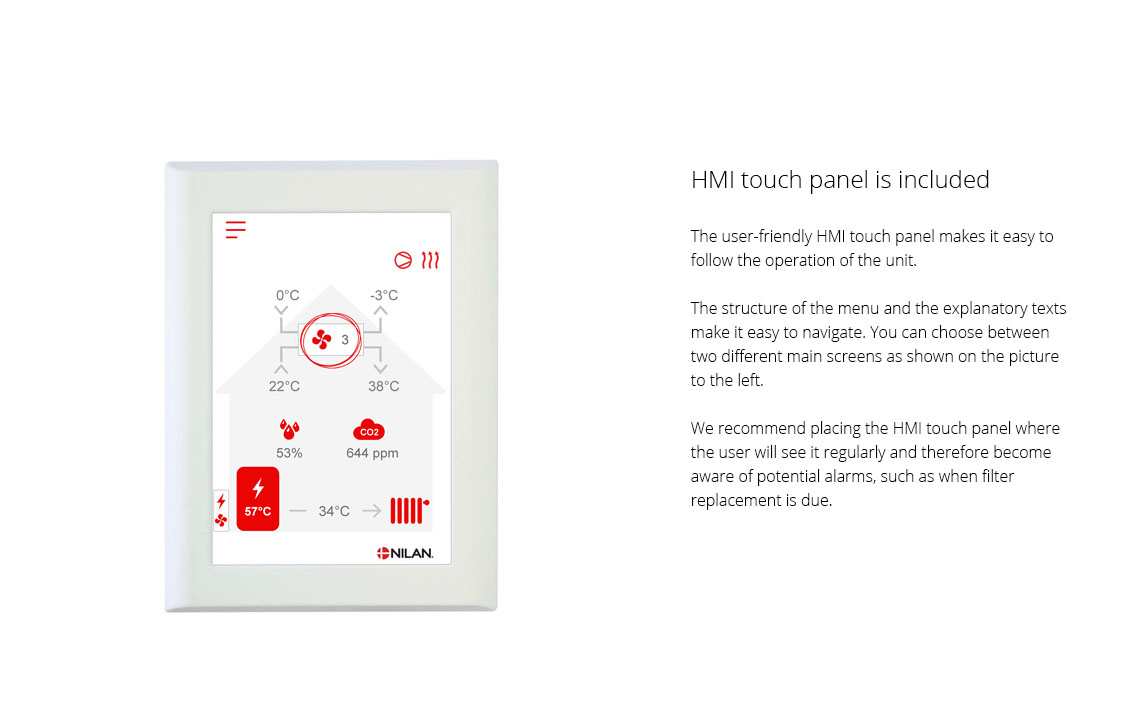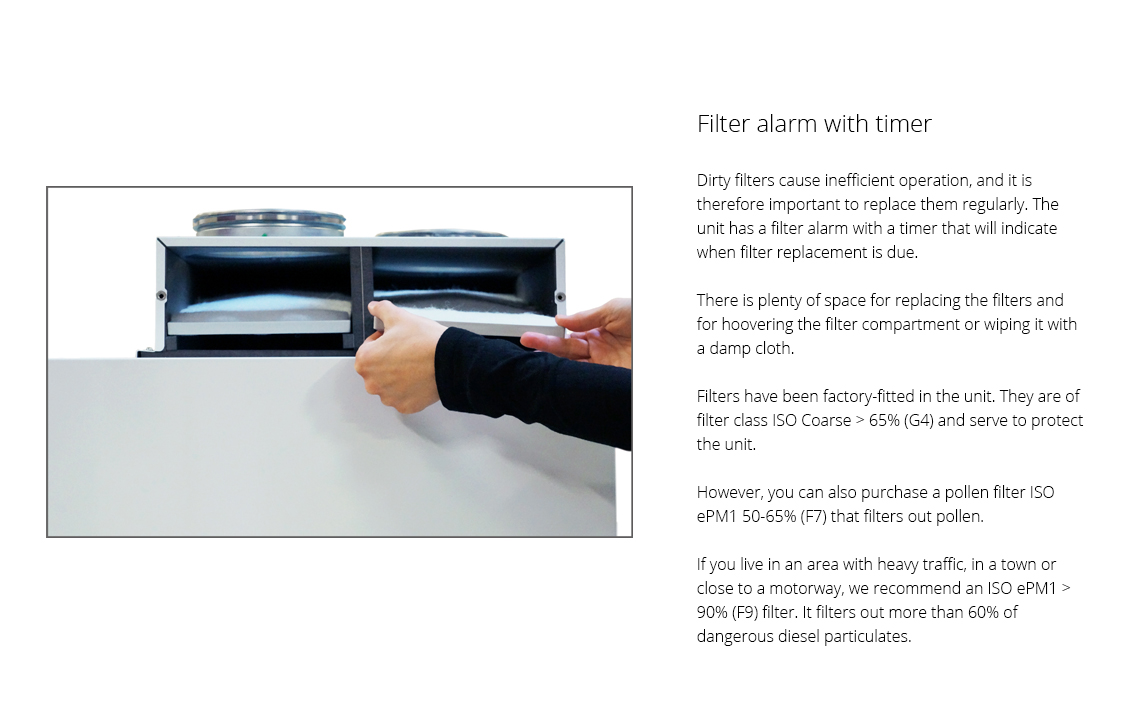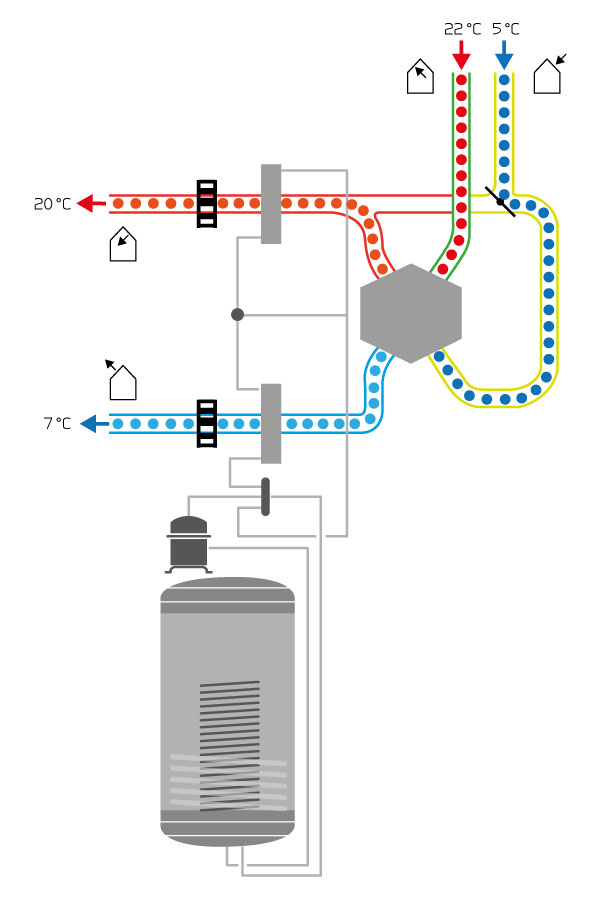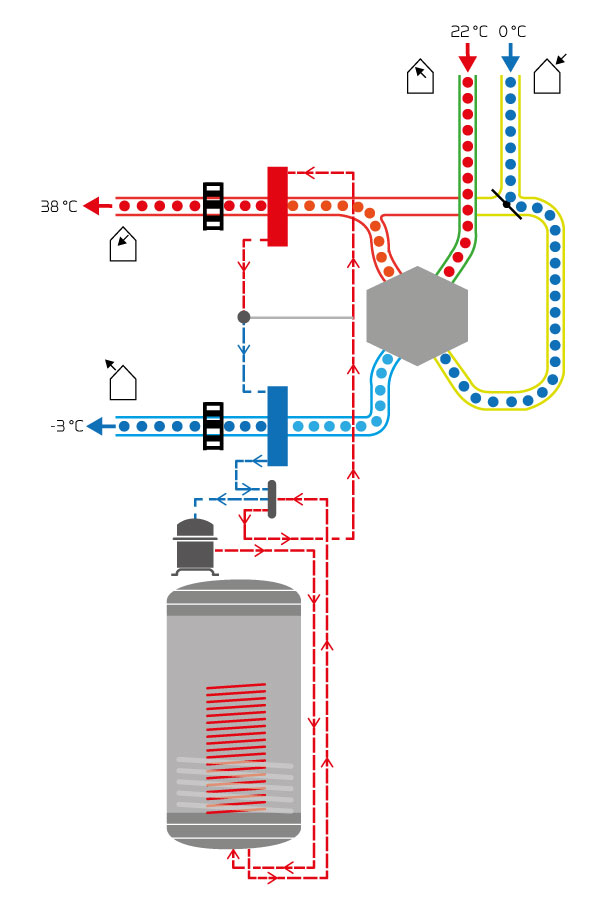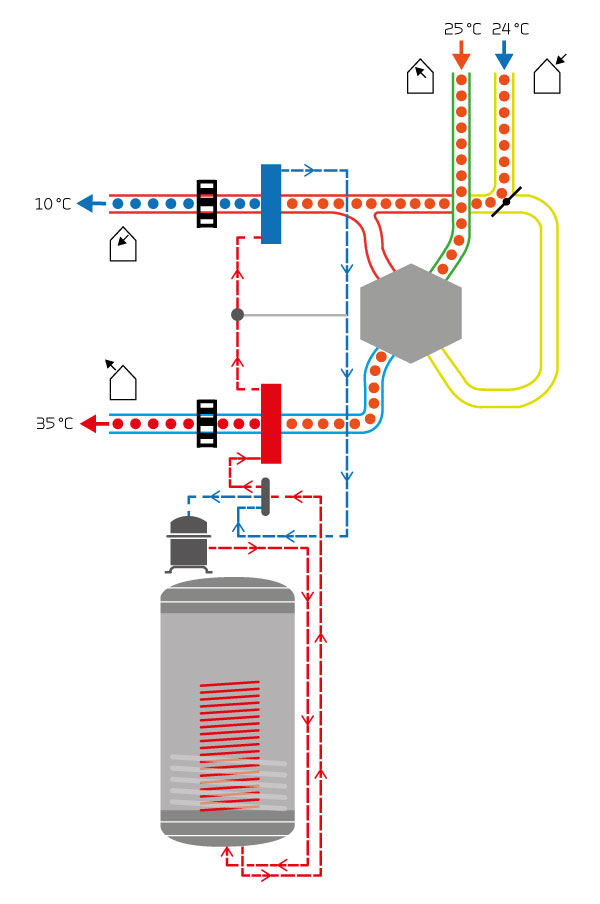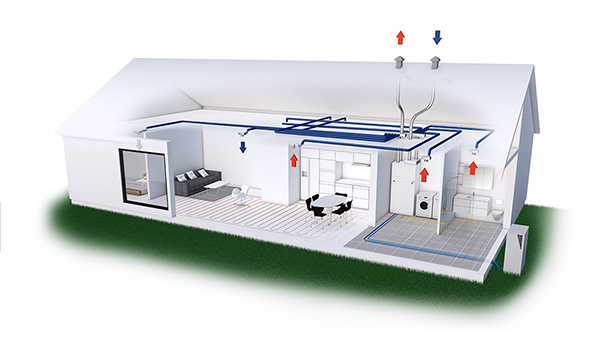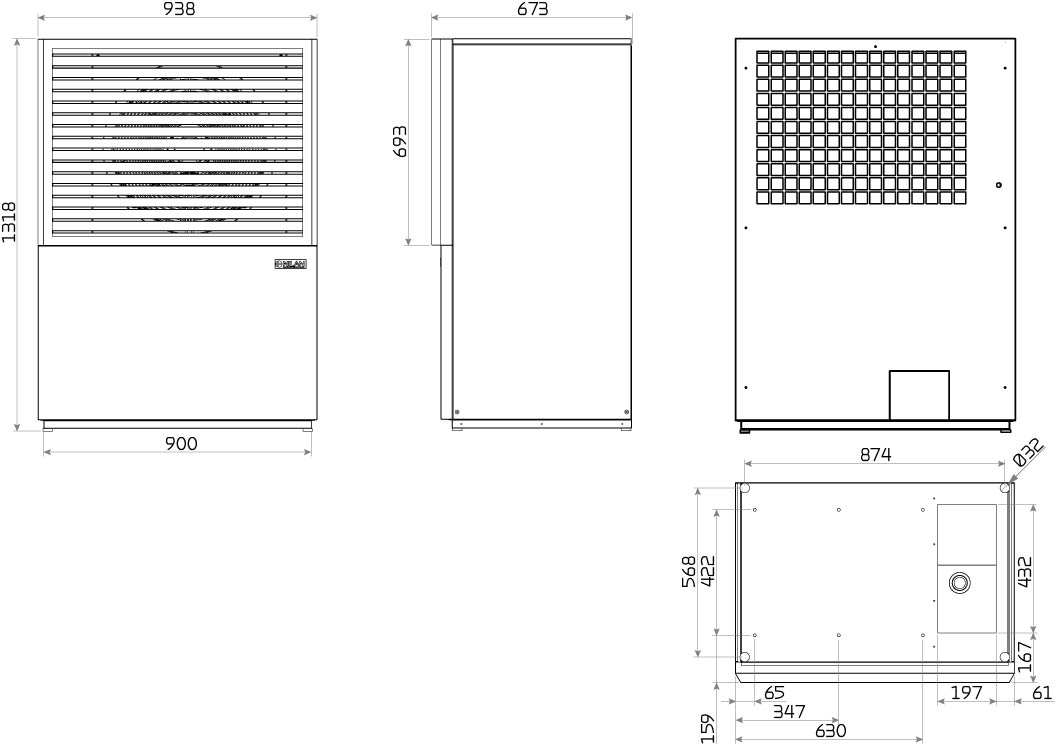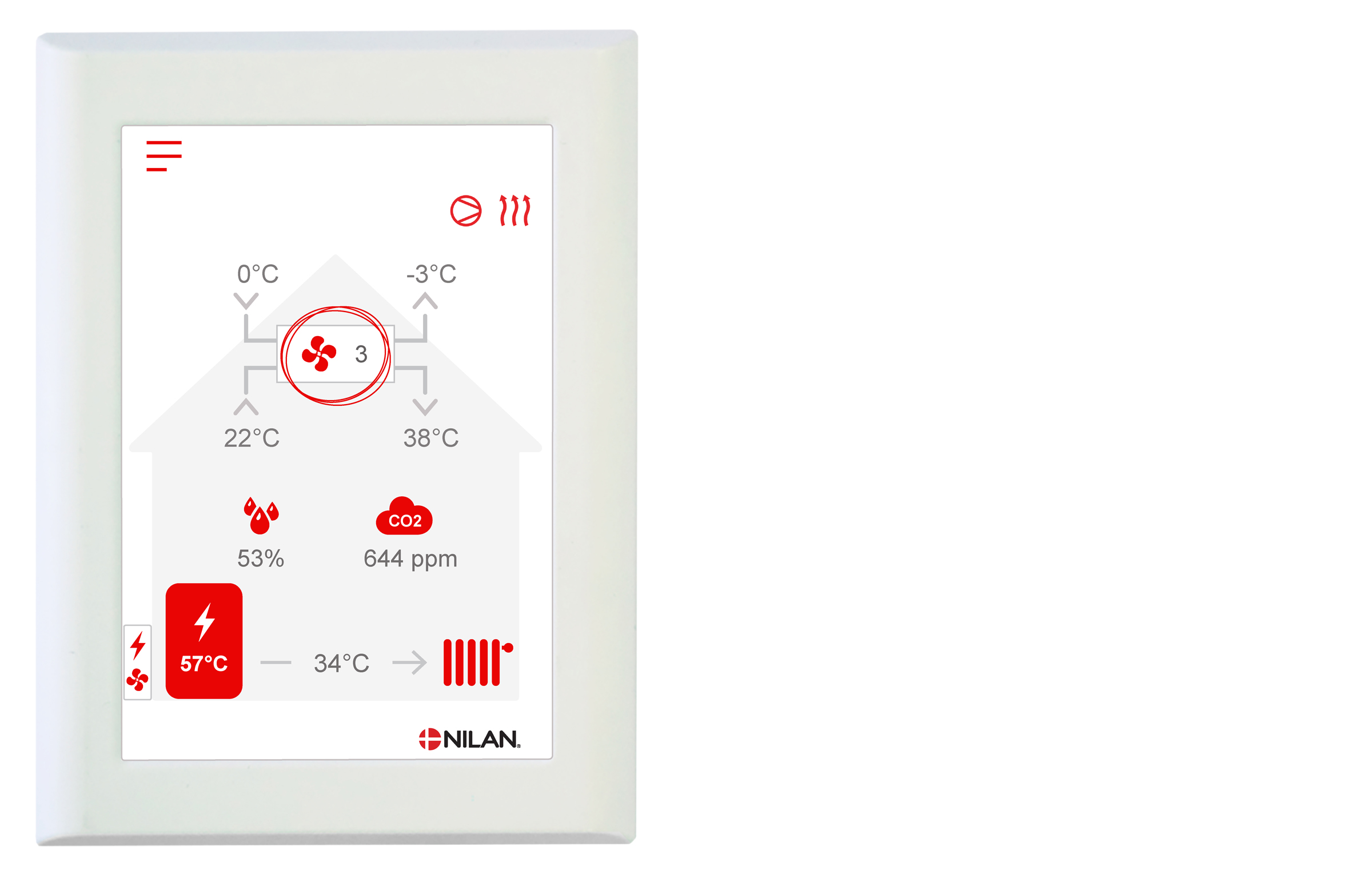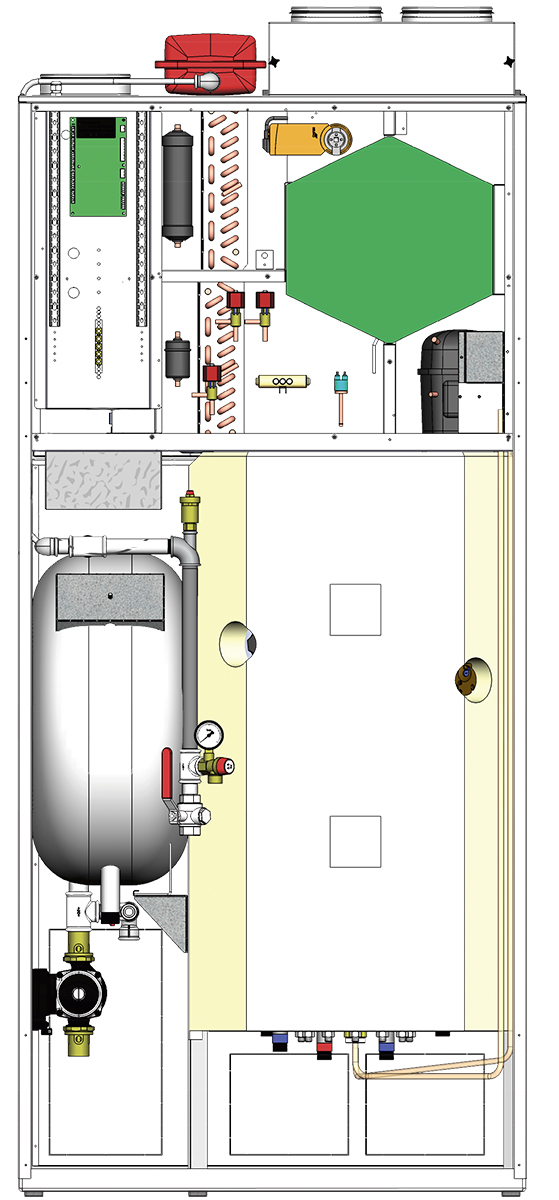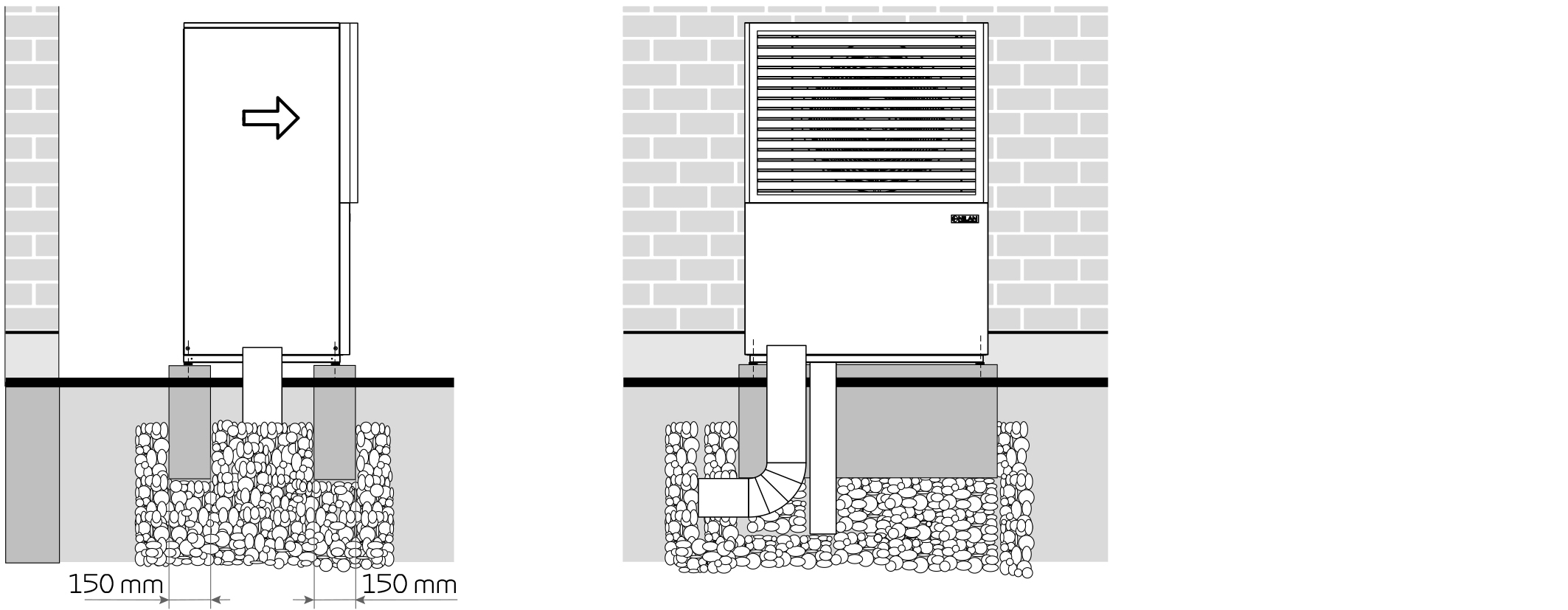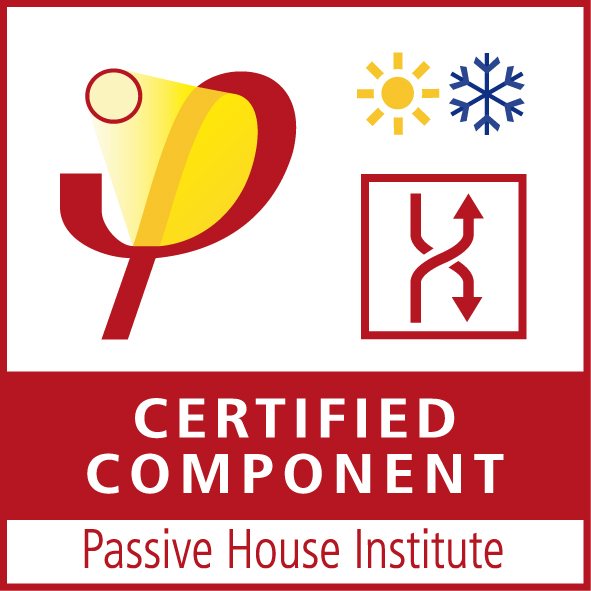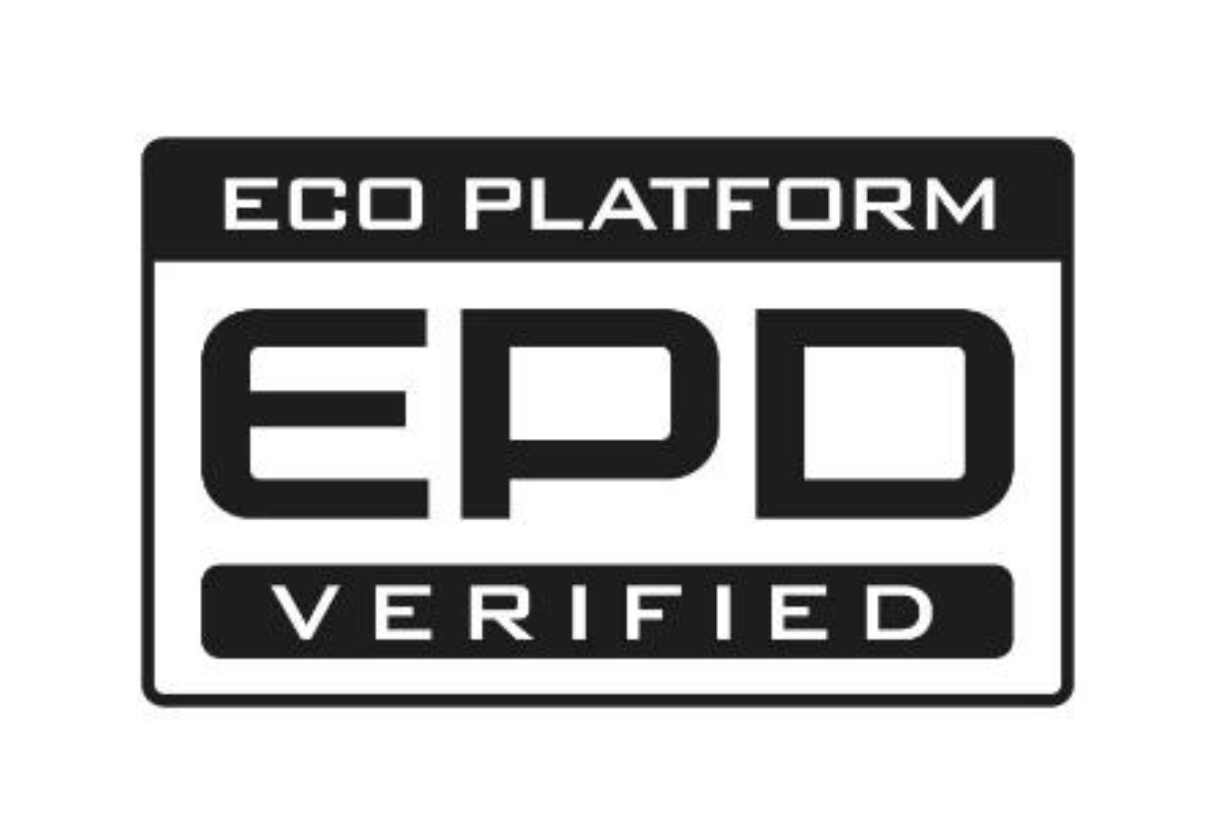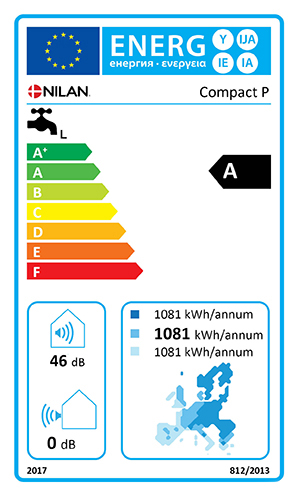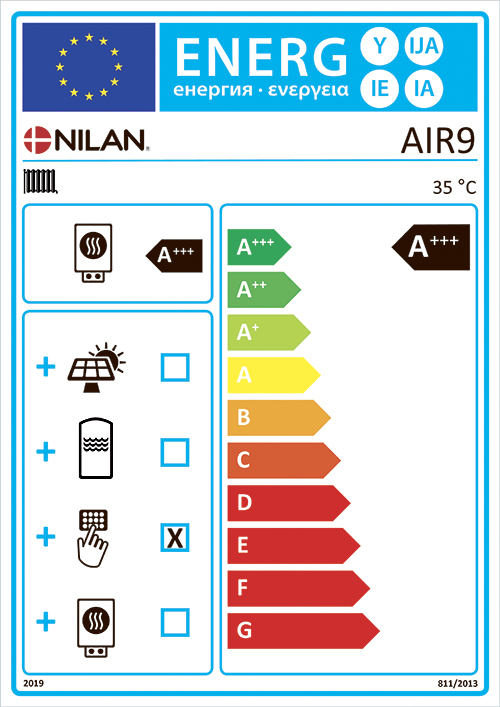Compact P AIR9
Compact P AIR9 is a multi-unit with three installations that are combined in one compact installation. It is intended for large dwellings with a ventilation requirement of up to 275 m3/h. The three installations comprise ventilation of the dwelling, production of domestic hot water, and heating of the dwelling via an efficient air to water heat pump.
By integrating all three installations in just one installation, you save considerable space in the machine room. Another advantage is that the control systems work in unison, which enables energy efficiency and thereby an overall saving in energy consumption.
Having an air to water heat pump means that you avoid having to bury geothermal earth tubes, which requires a certain amount of space.
Airflow (see planning data for SEL/SFP values)
Min : 50 m3/hMax : 275 m3/h
The “heart and lungs” of the house
Compact P is not a traditional ventilation unit. In contrast to other ventilation units, it recovers 100% of the heat from the extract air. The counterflow heat exchanger makes it possible to recover up to 95% of the energy in the extract air. This is then used to heat the outdoor air. The integral heat pump will utilise any remaining energy for producing domestic hot water.
The efficient AIR air to water heat pump supplies energy to heat the dwelling via an underfloor heating system or via low energy radiators.
Compact P
AIR9 (Heat pump)
*SCOP (Seasonal COP) is for ”low temperature use, average climate, defined flow, reversible” |
CapacityCapacity of standard unit as a function of qv and Pt, ext. SEL values according to EN 13141-7 are for standard units with ISO 16890 Coarse 75% (G4) filters and without heating element. SEL values comprise the unit’s total power comsumption excl. control. Attention! The SEL values are measured and stated as a total value for both fans. |
.jpg) |
Temperature efficiencyTemperature efficiency as a function of volume flow qv [m3/h] for unit with counterflow heat exchanger. Temperature efficiency according to EN13141-7 (2°C / 20°C). NB! The temperature efficiency, is for the heat exchanger only (without heat pump operation). |
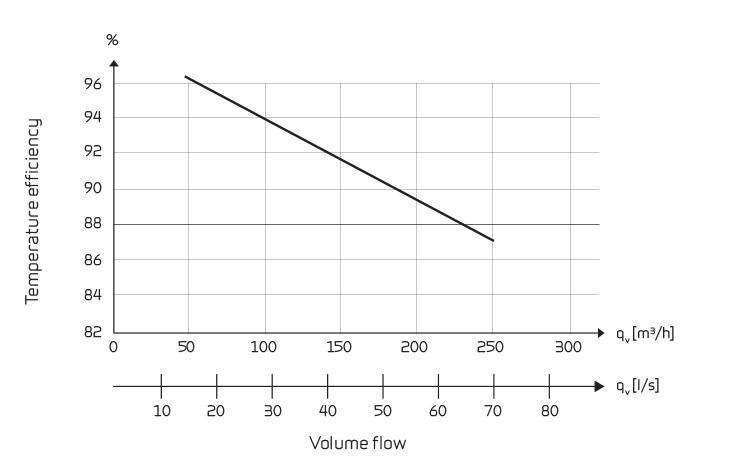 |
COP (air-air)Heat output factor COP [-] supply air as a function of outdoor temperature t21 [°C] and volume flow qv [m3/h] in accordance with EN14511 at a room temperature t11 = 21°C COP according EN14511 is calculated for the heat pump and counter flow heat exchanger combined. |
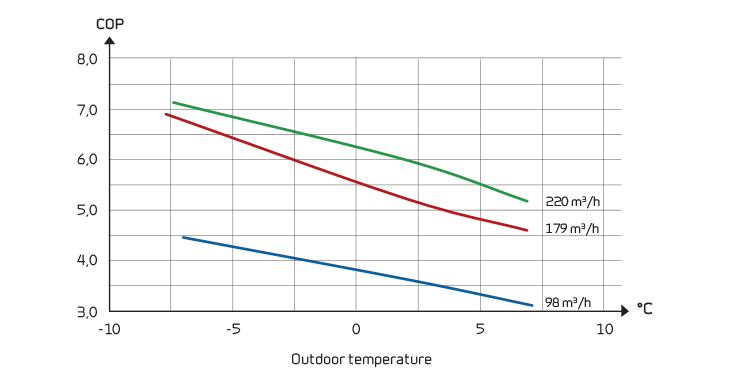 |
Heat output supply airHeat output Qc [W] as a function of qv [m3/h] and outdoor air temperature t21 [°C]. In accordance with EN 14511, t11=21°C (extract air). Heat output is the contribution to room heating added to the fresh air via Compact P to the supply air. The ventilation loss is the heat output that is lost without heat recovery at the given volume flow air. Ventilation loss: - - - - - - - - - - - - |
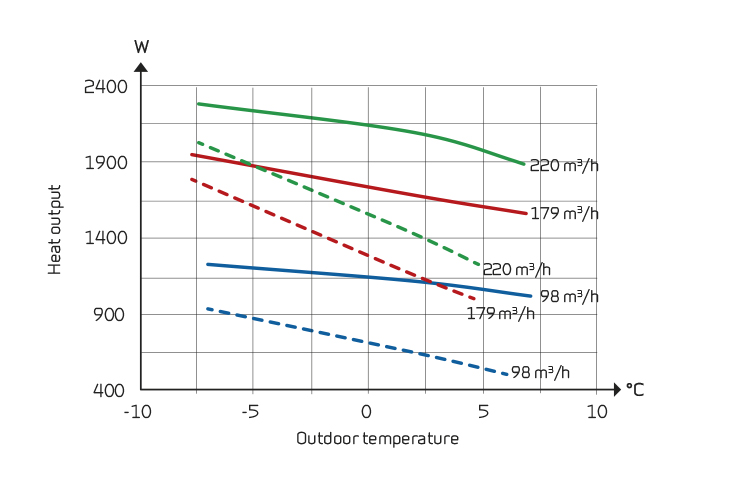 |
Tapped waterTapped volume in litres Vmax [L] from Compact P tank as a function of tapped temperature t [C°] and tank temperature at 40°, 50° and 60°C. |
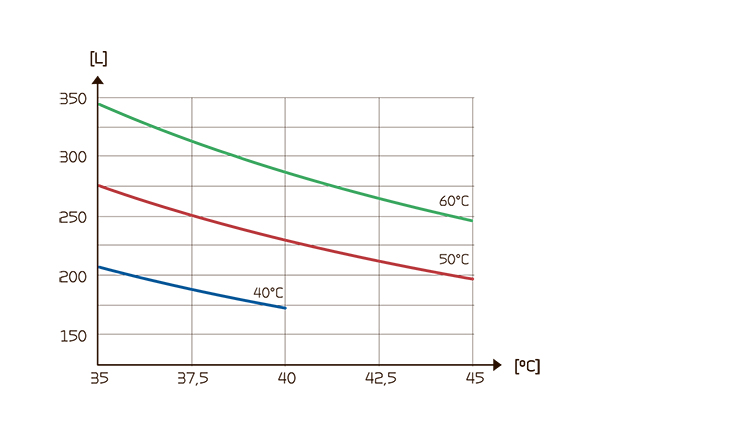 |
Sound dataSounddata is for qv = 210 m3/h and Pt, ext = 100 Pa in accordance with EN 9614-2 for surface and EN 5136 for ducts. Sound output level LWA drops with falling air volumes and falling back-pressure. At a given distance, the sound pressure level LpA will depend on the acoustic conditions at the installation site.
|
 |
Compact P (inside part)
All dimensions are in mm. Connections:
AIR9 (outside part)
|
The CTS602 control system is an advanced control system with many settings options. The control system is supplied with factory default settings that can be adapted to the operational requirements in order to achieve best possible operation and utilisation of the unit. The HMI Touch panel provides an overview of the current operation of the unit. The structure of its menu makes it easy to navigate for both user and installer. You can choose from 2 different images for the main screen. External communication
You can find further information about all the functions in the Software and Installation instructions for the unit.
|
Compact P (inside part)ATTENTION! When positioning the unit, you should always consider future services and maintenance. It is recommended that you leave a minimum of 60 cm of clear space in front of the unit. It must be easy to replace filters and it must be possible to replace, for instance, fans and other components. ATTENTION! The unit must be level to enable proper drainage from the condensate tray.
AIR9 (outside part)ATTENTION! Place the AIR unit on a stable base, ideally a cast foundation. An outdoor unit must always be positioned on a firm, horizontal and vibration free surface. Consider securing it to a fixed base. Youvshould also take into account the prevailing wind direction during the cold months when heating is required, as the performance of the heat pump will be reduced if the outdoor unit is exposed to strong winds.
|
PHI certifikat
Smart Grid
Compact P understøtter Smart Grid-teknologi, der gør det muligt for elselskabet at styre driften, så energien bruges, når den er billigst. EPD – Miljøvaredeklaration
|

